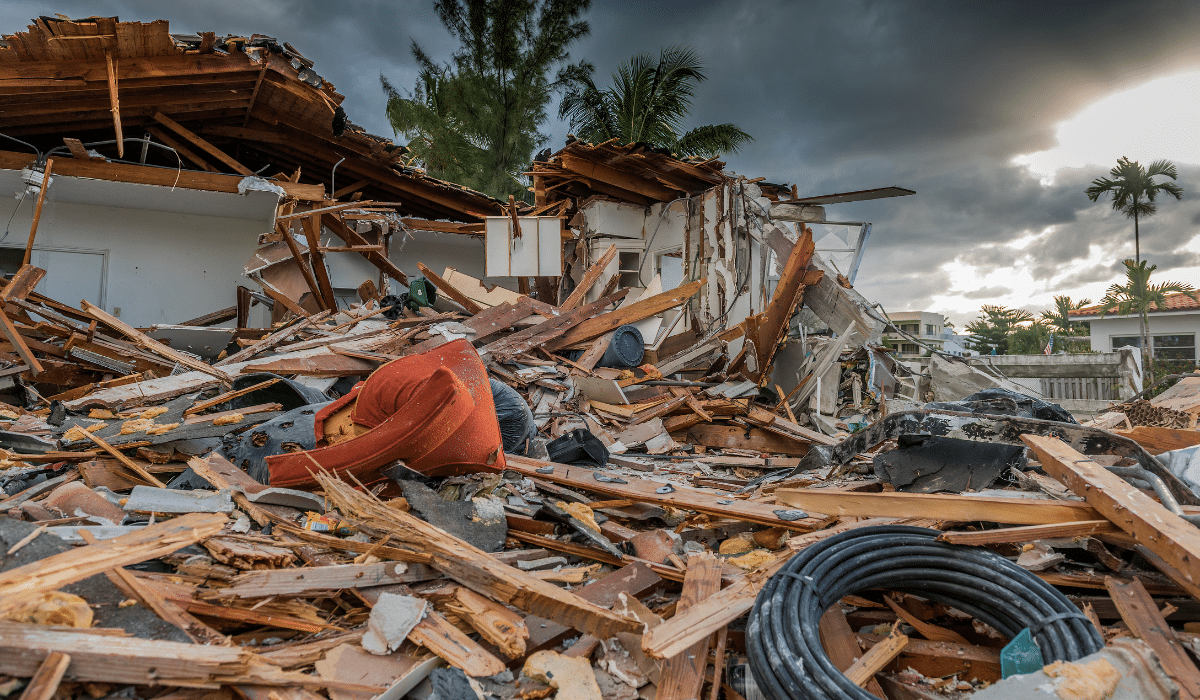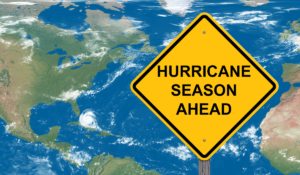Sure, you know how devastating tropical storms and hurricanes can be. With winds well over 100 mph, and relentless rains pounding down, structures can fail and major flooding can quickly destroy entire cities. But, did you know that these storms also pose significant respiratory dangers?
Storms and hurricanes can exacerbate air quality issues and increase the risk of respiratory distress, making respiratory health a surprisingly important concern when these disasters strike.
Developing a robust emergency plan to specifically addresses respiratory health is crucial to safeguarding individuals with pre-existing respiratory conditions and preventing adverse respiratory outcomes.
Here, we’ll dive into why it’s so important to keep these respiratory dangers in mind, and how you can create a comprehensive plan tailored to storms and hurricanes, with a focus on preserving respiratory well-being.
Let’s break it down.

Aftermath of Hurricane Hilary
On August 20th, 2023, Hurricane Hilary made landfall, unleashing its fury upon California and leaving a path of destruction in its wake.
With wind speeds surging to 130 mph (209 km/hr), and torrential rains exceeding 15 inches, the hurricane wreaked havoc, triggering widespread flooding, power outages, and substantial structural damage. It’s been tagged a category 4 storm, and the first tropical storm to hit southern California in 84 years.
Coastal areas experienced severe erosion and saltwater intrusion, while fragile ecosystems faced disruption major. And, in addition to the storm, there were also wildfires, and even an earthquake north of Los Angeles.
Fortunately, there have been no deaths or serious injuries reported so far. But, officials have warned of the risk of mudslides, especially in the mountainous regions.
Related Article: 5 Key Steps to Workplace Emergency Preparedness
The Respiratory Dangers of Storms and Hurricanes
While the most immediate impact of these storms are generally due to flooding and wind damage, these aren’t the only problems that can arise. Storms and hurricanes can also unleash a multitude of respiratory dangers, including:
1. Airborne Particulates: Strong winds can disperse particles from construction sites, vegetation, and industrial areas, leading to elevated levels of airborne particulate matter that can be inhaled and cause respiratory irritation.
2. Mold and Allergens: Excessive moisture and flooding resulting from storms can foster the growth of mold, a potent allergen that triggers respiratory symptoms in susceptible individuals.
3. Chemical Exposures: Floodwaters can carry hazardous chemicals and pollutants, exposing individuals to respiratory irritants and toxins.
So, what steps can you take to prepare your team for respiratory dangers such as these? Let’s break it down.
Developing a Respiratory-Health Focused Emergency Plan
1. Risk Assessment and Mitigation: Identify potential respiratory hazards associated with storms and hurricanes. Assess vulnerable populations, such as individuals with asthma, COPD, or allergies, and prioritize their needs in your plan.
2. Air Quality Monitoring: Integrate real-time air quality monitoring systems into your preparedness plan to track fluctuations in air quality during and after the storm. Utilize established air quality indices to guide decisions regarding outdoor activities and protective measures.
3. Personal Protective Equipment (PPE): Ensure an adequate supply of respiratory protective equipment, such as N95 respirators, masks, and inhalers, for individuals at risk. Educate your employees and residents on proper usage and disposal of PPE.
See OSHA Guideline on Emergency Preparedness and Response
See OSHA Guideline on Hurricane Preparedness and Response
See OSHA eTool for Hurricane Hazard Exposure and Risk Assessment
See EPA Guideline for Hurricanes
What Steps Can You Take?
1. Public Awareness Campaigns: Launch awareness campaigns before storm season, educating individuals about respiratory risks and the importance of preventive measures.
2. Emergency Alerts: Integrate respiratory advisories into emergency alerts and communications to ensure individuals are informed about air quality conditions and advised to take necessary precautions.
3. Sheltering Strategies: Establish shelters with adequate ventilation and air filtration systems to mitigate indoor air quality issues. Ensure these shelters are designated as respiratory-safe zones for individuals with compromised lung function.
4. Medical Care and Support: Coordinate with medical professionals to provide immediate medical assistance and support for individuals experiencing respiratory distress during and after the storm.
See OSHA Guidelines on Hurricane Preparedness and Planning
Post-Event Recovery and Psychological Support
1. Dealing with Mold and Allergens: Instruct individuals on mold prevention and remediation techniques to curb respiratory irritants in the aftermath of flooding.
2. Psychological Support: Offer psychological support for individuals who experience anxiety or trauma due to respiratory health challenges during the storm.
3. Ongoing Training: Regularly train staff, responders, and community members on the respiratory components of the emergency preparedness plan.
4. Plan Adaptation: Continuously review and adapt the plan based on lessons learned from previous storms, advancements in respiratory health knowledge, and changing weather patterns.
Key Takeaways
Developing an emergency preparedness plan that prioritizes respiratory health is an important part of mitigating the risks associated with storms and hurricanes.
By incorporating tailored strategies, real-time monitoring, and education, you and your team can effectively protect vulnerable individuals from respiratory dangers.
This proactive approach ensures that individuals with respiratory conditions are equipped to navigate the challenges posed by natural disasters, ultimately promoting respiratory well-being and enhancing your overall emergency preparedness.
About Worksite Medical
In most cases, OSHA requires medical surveillance testing, and at no cost to employees.
Worksite Medical makes that program easier with mobile medical testing.
We conduct on-site respirator fit tests, as well as audiometric exams, pulmonary function tests and heavy metal lab work, right on your job site. We also keep accurate, easy-to-access medical records for your convenience. You’ll keep your employees at work, and stay ahead of OSHA inspections.




